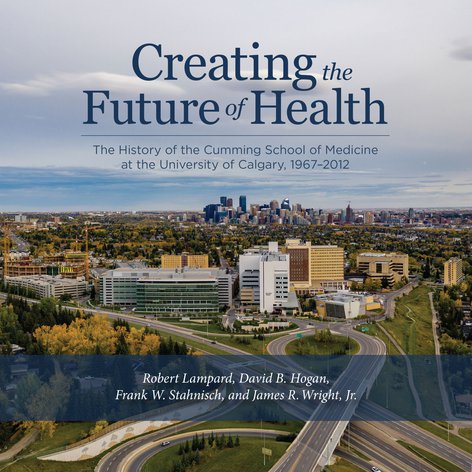This history of one of the newest Canadian medical schools presents some intriguing surprises. Even the title is unexpected, pointing to the act of creating a future world of health care that, one imagines, the authors hope will be inspired by this university faculty.
The book was deliberately written to be available around the semi-centenary of the Calgary Faculty of Medicine, now known as the Cumming School of Medicine. It meets the challenges of describing the birth and evolution of a large institution while capturing the peculiarities of the people and forces on the front lines. It is a book organized around the deans of medicine yet with many pictures and anecdotes about students and support staff, a book that understands 20th century societal expectations of health care, yet includes a chart of the price of crude oil.
The book is characteristic of histories written in the 20th century by incorporating perspectives that go well beyond those of the main protagonists and the evolving organizational and physical structures that make up a school of medicine. Throughout, the text illustrates how the interacting forces of national, provincial and local cultures, economics and personalities resulted in a unique institution embedded in and influencing related Calgary and Alberta institutions. These large brushstrokes are supplemented with the finer details describing the experiences – with quotes and images – of those who are fully embedded in the school: the medical students and teachers.

The four authors describe their struggles with how best to organize the book by time period and topic, eventually settling on a stratigraphic approach in which the school’s challenges and accomplishments are examined in layers defined by the era led by each of the six deans. Fortunately, they preceded this historical approach with an introduction that explains much of the local and international influences on the evolution of health care and medical education. The use of substantial sidebars allowed them to delve into many of the unique developments at Cumming – including one on just who Geoffrey Cumming is and why he made his donation in 2014. Other sidebars, like the one that explains the tradition of naming each incoming class with an animal accompanied by an artist-created image of that animal, reveal the soul of the organization. The appendices, glossaries and indexes help the reader use the book as a reference.
Want to know about why medical schools come about and how physicians are educated? How human interactions at the micro- and macro-levels result in the health care you experience? If you are at all associated with the Cumming School of Medicine or ever wondered why things work the way they do … this is the book for you.
- Dr. Tom Rosenal
Editor’s Note: Open access to the book is available here or it can be purchased directly from the U of C Press.